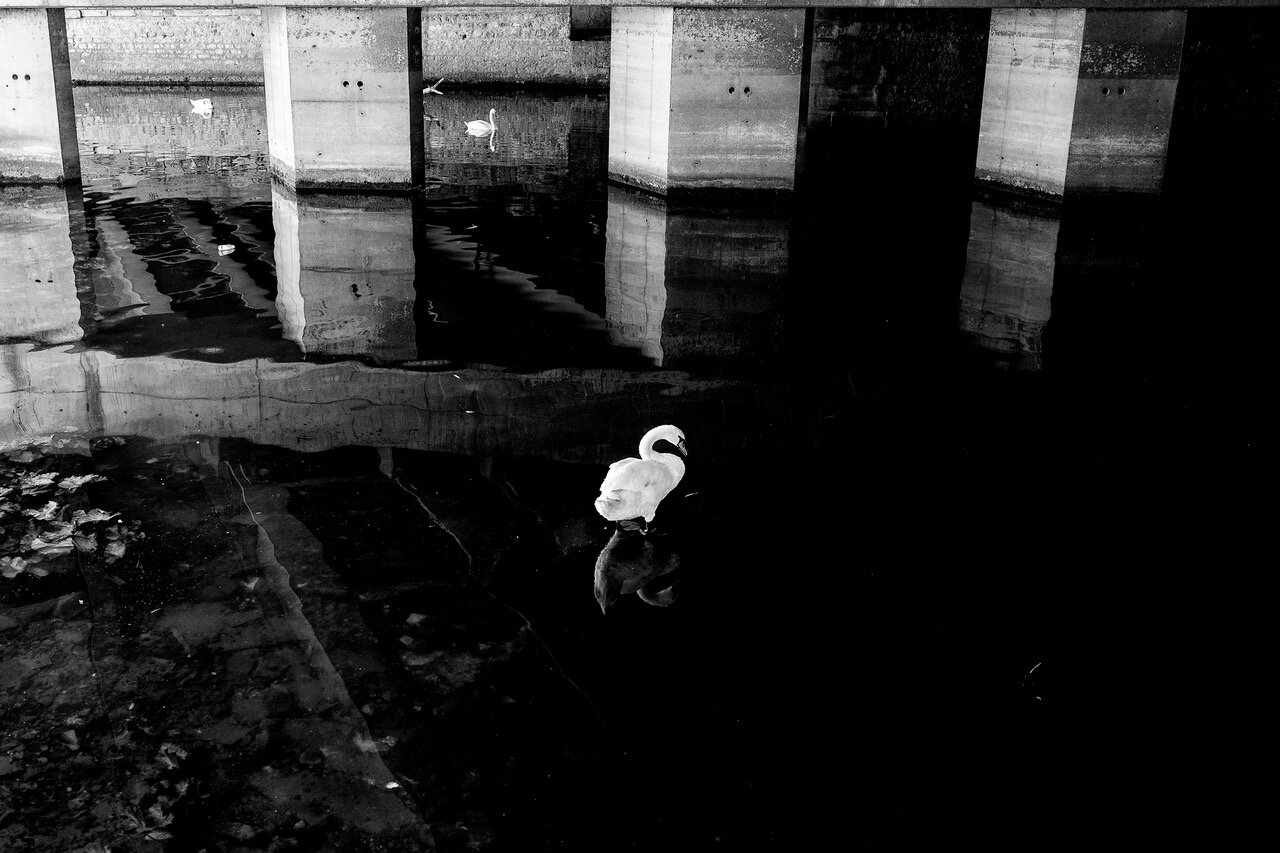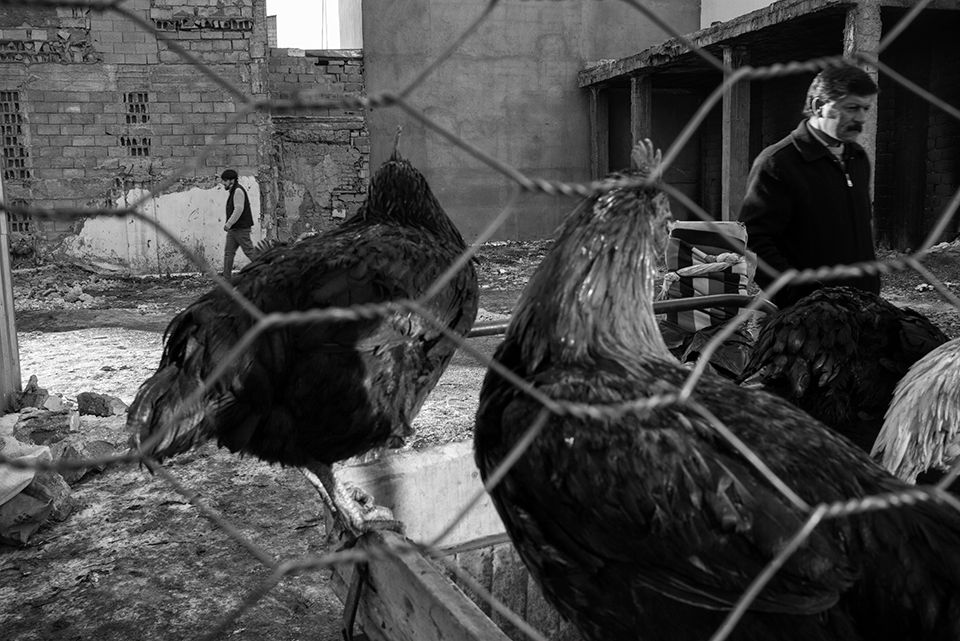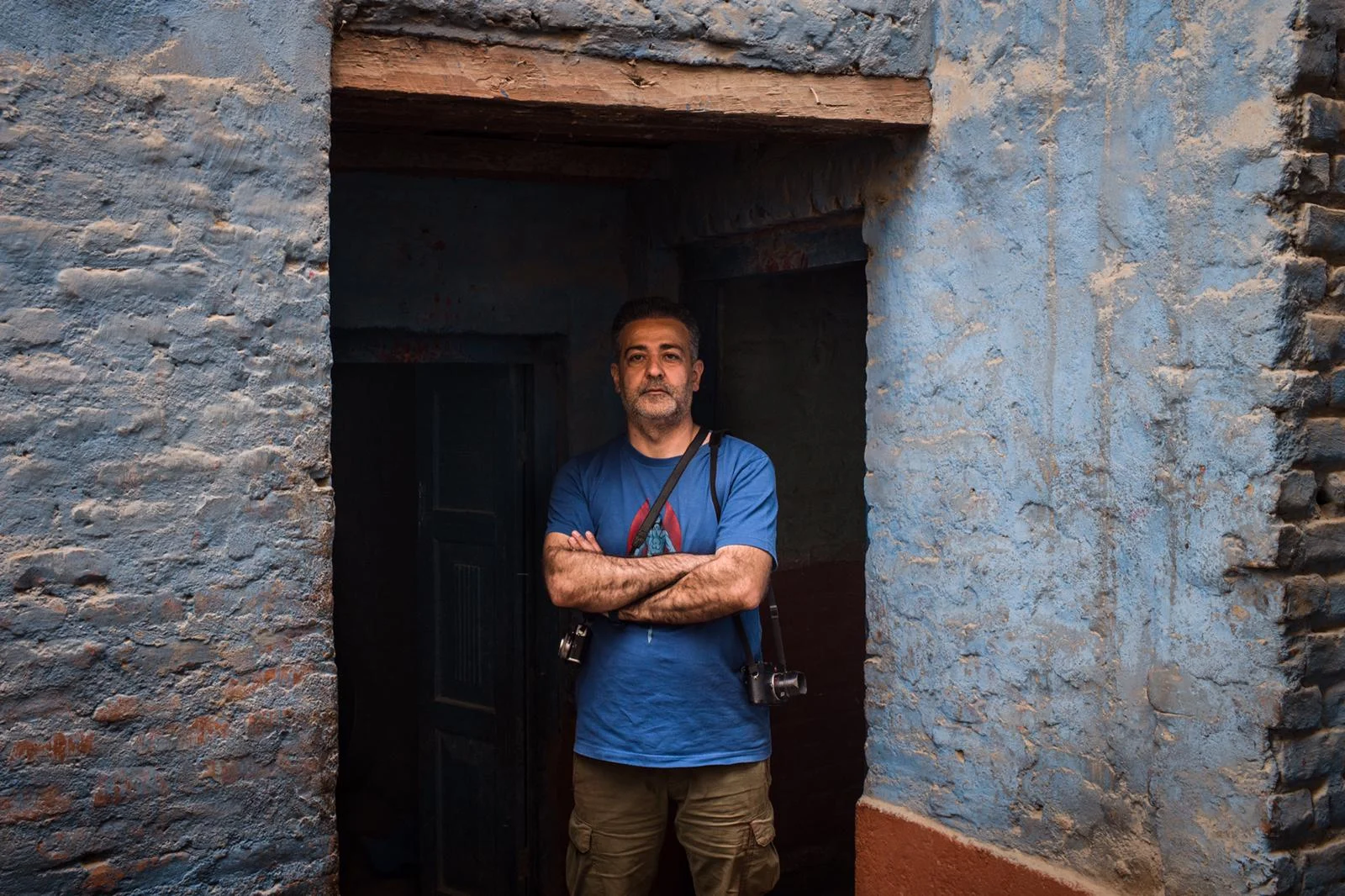Hi! I'm Jenn, a French photographer and director, who recently moved to the countryside (Burgundy, France). I spend my time photographing the rural community here, as part of a long-term project, and experimenting with both documentary and fiction through my YouTube channel named "Gavotte".
Self-portrait, first one in a series of portraits taken daily during self-quarantine against the Covid-19 pandemic.
1. You have recently started a self-portrait project, “quarantine diary”, due to the current situation of being on self-quarantine to prevent the spread of Covid-19. Can you tell us how is it going and how you stay creative in a confined space and what inspires you to come up with a new portrait each day?
The village where I live in is quite small and its economy is mainly based on farmers’ and craftsmen’ activities so half of the population is still working and the other half is in quarantine in their homes, very rarely going out. All in all, the atmosphere is quieter than before but there’s still life going on. I’m lucky to have moved in my grandmother’s house last December, which offers, thanks to its countryside style and 60’s design, a lot of photographic possibilities. The place is literally filled with 70 years of family stuff, which was overwhelming at first but turned out to be very precious for this project. Ideas usually come by wandering around my place taking photographs of rooms that could be good “backgrounds” or “sceneries”. I pay attention to the weather and of course the light. A room can be totally dull one day and very interesting the next depending on it. Then I try to imagine a character, to find what she could wear, how she would walk or pose for the camera. Each day generally starts by this solo brainstorming going through clothes, objects, accessories etc. that I try to assemble together to create a realistic scene.
Quarantine Diary
Quarantine Diary
2.Do you have any ongoing long term photographic project other than “quarantine diary”? What makes you pursue one?
Yes, I’m currently working on a photo series called “Les Irréductibles” (The Indomitables), focusing on the people living in the French region called “Le Morvan” and highlighting the ways they resist and maintain their social and cultural links within their rural community. I always find it appealing to observe and photograph slightly isolated communities and their ways of living and approaching to life.
Ouroux-en-Morvan, Burgundy, France, 2020
Ouroux-en-Morvan, Burgundy, France, 2020
Ouroux-en-Morvan, Burgundy, France, 2020
3. When do you choose video?
If I think movement will best capture the feeling of a situation then I’ll choose video, if I think I need to freeze it in an instant then I’ll go for photography. This decision usually happens when I’m facing the scene I want to capture, as I carry around two cameras most of the time (one for photography and one for video). I ask myself “what do I want to say?”, “What do I want to show?”, “what emotions do I want to convey?” and the answers to these questions lead me to choose between photography, video and mixed-media. I’m drawn by situations of self-imprisonment, repetition and absurdity. When I see someone who I feel trapped himself or herself, who I feel lives in a golden cage, I will definitely go for photography and try to compose the image to express this self-imprisonment. On the contrary, when facing an absurd scene with a comic potential (a repetition of gestures, dialogue…), then I’ll go straight for video.
4. How do cinema and selecting locations influence street and documentary photography for you ?
Street and documentary photography help me experiment with composition, tension in the frame, light, and allow me to access people’s life stories. Photographing people is a way to constitute a study: how the people walk, place their hands, talk, interact with each other and with the space. This gives me ideas of characters or situation I want to write about. On the other hand, video, and more particularly fiction, is an infinite source of inspiration in terms of framing, (inner) characters’ conflicts and how the directors managed to visually express them. Memorable cinema scenes quite often come to my mind when I photograph. My favorite places to photograph are rural ones regardless of the country, because I find that people are more independent and relaxed in their bodies and minds. They occupy the space with a lot more freedom, sometimes creating intriguing and fascinating scenes. I simply wander around intuitively and stop to talk and connect with the people there. What I like the most is meeting new people, getting inside their houses or environment, after being invited by them.
Quarantine Diary
5.Do you have your favorite directors or photographers? Who are your heroes?
I will be totally not original. In photography, my heroes are Josef Koudelka, W. Eugene Smith and Harry Gruyaert. I love Koudelka for his impeccably balanced photographs that also convey the deep emotions of the people, particularly in the Gypsies series. W. Eugene Smith for his dedication all along his life and career to find authenticity in moments he photographed. And Harry Gruyaert for the new dimensions he manages to bring to life. I often feel like I’m staring at a painting from another world when I see his photographs, which reminds me of De Chirico’s work.
In cinema, it is almost too hard to choose but I would say P. Paolo Pasolini, Federico Fellini, Akira Kurosawa, Jean Renoir, Satyajit Ray, Miguel Gomes for how they achieve to have a distinctive perception of reality, intertwining humor and poetry.
Quarantine Diary
Quarantine Diary
Bonjour ! Je suis Jenn, photographe et réalisatrice française, récemment installée à la campagne (Bourgogne, France). Je consacre mon temps à photographier la communauté rurale ici, dans le cadre d'un projet à long terme, et à expérimenter à la fois le documentaire et la fiction via ma chaîne YouTube nommée "Gavotte".
1. Vous avez récemment lancé un projet d'autoportrait, «Journal de quarantaine», en raison de la situation actuelle de mise en quarantaine pour empêcher la propagation de Covid-19. Pouvez-vous nous dire comment ça se passe et comment vous restez créative dans un espace confiné et ce qui vous inspire pour inventer un nouveau portrait chaque jour ?
Le village dans lequel je vis est relativement petit et son économie est principalement basée sur les activités des agriculteurs et des artisans, de sorte que la moitié de la population travaille toujours et l'autre moitié est en quarantaine, sortant très rarement. Dans l'ensemble, l'atmosphère est plus calme qu'auparavant, mais il y a toujours de la vie. J'ai la chance d'avoir emménagé dans la maison de ma grand-mère en décembre dernier, qui offre, grâce à son style campagnard et son design inspiré des années 60, de nombreuses possibilités photographiques. L'endroit est littéralement rempli de 70 ans de souvenirs familiaux, ce qui était écrasant au début mais s'est avéré très précieux pour ce projet. Les idées viennent généralement en déambulant dans la maison, en prenant des photos de pièces qui pourraient être de bons "arrière-plans" ou "décors". Je fais attention à la météo et bien sûr à la lumière. Une pièce peut être totalement terne un jour et très intéressante le lendemain. Puis, j'essaie d'imaginer un personnage, de trouver ce qu'elle pourrait porter, comment elle marcherait ou poserait pour la caméra. Chaque journée commence généralement par ce brainstorming solo à chercher des vêtements, des objets, des accessoires etc. que j'essaye de rassembler pour créer une scène réaliste.
2. Avez-vous un projet photographique à long terme autre que «journal de quarantaine»? Qu'est-ce qui vous fait en poursuivre un?
Oui, je travaille actuellement sur une série photographique intitulée "Les Irréductibles", où je me focalise sur les habitants de la région française appelée le Morvan et en mettant en évidence les façons dont ils résistent et maintiennent leurs liens sociaux et culturels au sein de leur communauté rurale. Je trouve toujours attrayant d'observer et de photographier les modes de vie des communautés isolées.
3. Quand choisissez-vous le format vidéo?
Si je pense que le mouvement capturera le mieux l’émotion d'une situation, je choisirai la vidéo, si je pense que je dois la figer en un instant, je me tournerai vers la photographie. Cette décision se produit généralement lorsque je suis face à la scène que je veux capturer, car j’ai la plupart du temps deux appareils photo sur moi (un pour la photographie et un pour la vidéo). Je me demande "Qu'est-ce que je veux dire ?", "Qu'est-ce que je veux montrer?", "Quelles émotions dois-je transmettre?" et les réponses à ces questions m'amènent à choisir entre photographie, vidéo et mix-media. Je suis attiré par des situations d'auto-emprisonnement, de répétition et d'absurdité. Quand je vois quelqu'un que je sens pris au piège, que je sens vivre dans une cage dorée, je me tourne vers la photographie et essaie de composer l'image pour exprimer cet auto-emprisonnement. Au contraire, face à une scène absurde au potentiel comique (répétition de gestes, dialogue...), alors je choisis de faire tourner la caméra.
4. Comment le cinéma et la sélection des lieux influencent-ils votre pratique de la photographie de rue/documentaire ?
La photographie documentaire m'aide à expérimenter la composition, la tension dans le cadre, la lumière et me permet d'accéder aux histoires personnelles des gens. Les photographier est un moyen de constituer une étude : leur manière de marcher, de placer leurs mains, de parler, d’interagir entre eux et l’espace. Cela me donne des idées de personnages ou de situations pour l’écriture de films de fiction. D'autre part, la vidéo, et plus particulièrement la fiction, est une source d'inspiration infinie en termes de cadrage, de conflits (intérieurs) entre les personnages et la façon dont les réalisateurs ont réussi à les exprimer visuellement. Souvent, des scènes de cinéma mémorables me viennent à l'esprit lorsque je photographie. Mes endroits préférés pour photographier sont les zones rurales quel que soit le pays, car je trouve que les gens sont plus indépendants et libres dans leur corps et leur esprit. Ils occupent l'espace avec beaucoup plus de liberté, créant parfois des scènes intrigantes et fascinantes. Je me promène simplement intuitivement et m'arrête pour parler et échanger des idées avec eux. Ce que j'aime le plus, c'est rencontrer de nouvelles personnes, entrer dans leur maison ou leur environnement, après avoir été invité par elles.
5. Avez-vous vos réalisateurs ou photographes préférés? Quels sont vos héros?
Je vais être totalement prévisible. En photographie, mes héros sont Josef Koudelka, W. Eugene Smith et Harry Gruyaert. J'adore Koudelka pour ses photographies impeccablement équilibrées qui transmettent aussi les émotions profondes des personnages, en particulier dans la série Gypsies. W. Eugene Smith pour son dévouement tout au long de sa vie et de sa carrière pour trouver l'authenticité dans les moments qu'il a photographiés. Et Harry Gruyaert pour les nouvelles dimensions qu'il parvient à créer. J'ai souvent le sentiment de regarder une peinture d'un autre monde quand je vois ses photographies, qui me rappellent le travail de De Chirico.
Au cinéma, il est presque trop difficile de choisir, mais je dirais P. Paolo Pasolini, Federico Fellini, Akira Kurosawa, Jean Renoir, Satyajit Ray, Miguel Gomes pour la façon dont ils parviennent à avoir une perception distinctive de la réalité, mêlant humour et poésie.















































































